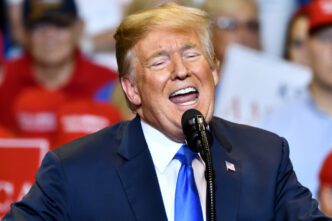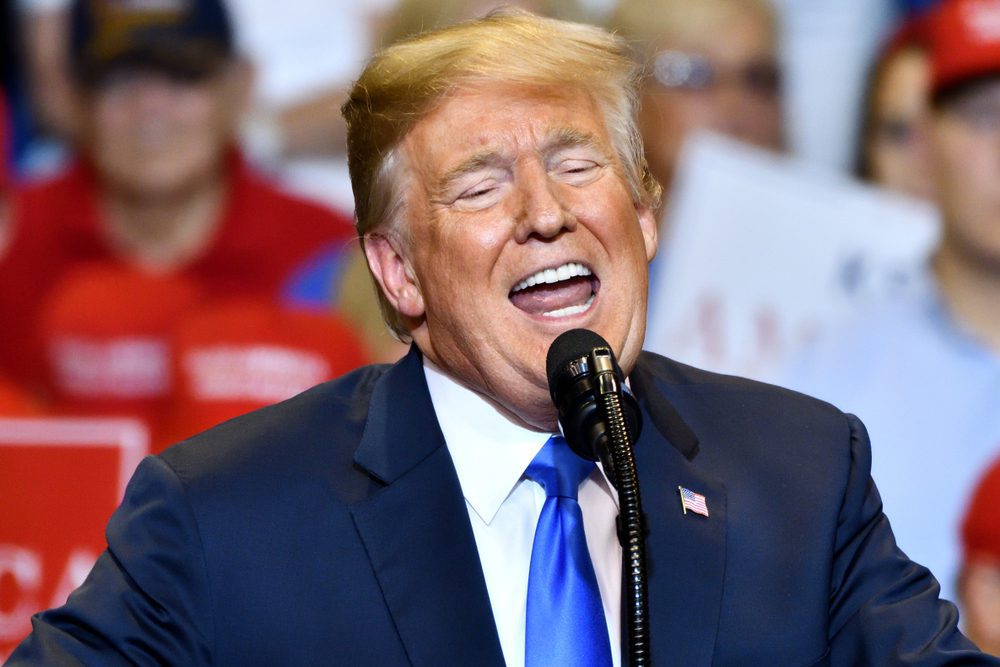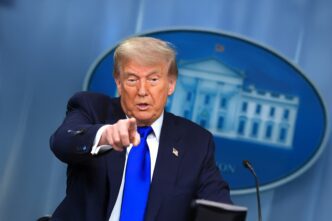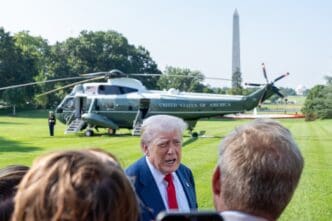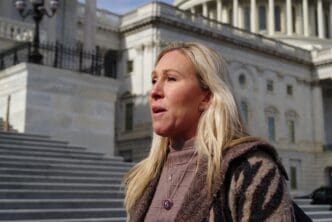Executive Summary
The Story So Far
Why This Matters
Who Thinks What?
President Donald Trump and his political allies are facing scrutiny for selectively interpreting recent acts of political violence, including the assassination of Charlie Kirk, to assert that such incidents predominantly stem from the political left. This narrative, articulated by Trump and Vice President JD Vance, has drawn criticism for allegedly cherry-picking evidence and overlooking a broader history of politically motivated violence, as well as the inflammatory rhetoric employed by figures on the right.
Claims Regarding Political Violence
Following the assassination of Charlie Kirk, President Trump stated on Sunday that “the problem is on the left. It’s not on the right.” Vice President JD Vance echoed this sentiment on Monday, claiming that “most of the lunatics in American politics today are proud members of the far left.” While investigations continue into the motivations of suspect Tyler Robinson, who has some links to the left, the full picture remains under development.
A Broader Look at Recent Violent Episodes
However, an analysis of recent political violence reveals a more complex landscape than presented by Trump and his allies. Democratic figures have also been targets of violence. This includes the shooting of two Democratic Minnesota state lawmakers in June, an arson attempt at Pennsylvania Gov. Josh Shapiro’s home in April, and a former Republican candidate paying individuals to shoot up Democratic officials’ homes in New Mexico in late 2022 and early 2023.
Additionally, Paul Pelosi, husband of then-Speaker Nancy Pelosi, was brutally attacked in 2022 by a man who sought the Speaker. The 2020 plot to kidnap Democratic Michigan Gov. Gretchen Whitmer also involved individuals with anti-government sentiments. Perhaps most notably, Trump supporters engaged in violent actions on January 6, 2021, to try and overturn the 2020 election results.
In several of these instances, prominent Republicans, including Trump, quickly sought to suggest that Trump’s opponents were responsible, claims that often proved overzealous. The motivations of perpetrators in such tragedies have frequently been complex and unclear. President Trump himself recently indicated unfamiliarity with the assassination of former Minnesota House Speaker Melissa Hortman, which occurred three months prior to his comments.
Even regarding the assassination attempt against Trump in July, he and his allies have attributed it to the “radical left” without conclusive evidence, despite the alleged perpetrator, Thomas Matthew Crooks, being a registered Republican. The broader point, according to the analysis, is that the landscape of political violence is far more nuanced than Trump’s singular framing suggests.
Trump’s and Allies’ Rhetoric
Trump and his allies have also argued that violent attacks, like the one on Kirk, stem from the left’s “extreme rhetoric,” citing comparisons of figures like Trump to Nazis or fascists. Trump claimed on Wednesday that “this kind of rhetoric is directly responsible for the terrorism that we’re seeing in our country today.” Senator Katie Britt of Alabama similarly blamed media for airing claims that Trump is a fascist or like Adolf Hitler, calling it “the rhetoric that led us to this moment.”
However, Trump himself has used similar rhetoric, labeling political opponents as fascists and comparing U.S. intelligence actions to “Nazi Germany” in 2017, and Democrats to a “Gestapo administration” in May 2024. The analysis highlights that Trump’s own rhetoric has often been notably violent and that he and his allies have sometimes appeared dismissive of political violence when it did not target their side.
Examples include Trump’s comments about the Paul Pelosi attack, which became a subject of jest for many, including Trump and Donald Trump Jr. Other instances include Trump musing about Liz Cheney being “fired upon,” suggesting “Second Amendment people” could prevent Hillary Clinton from picking judges, reposting a video saying “the only good Democrat is a dead Democrat,” and making light of his supporters surrounding a Biden campaign bus.
Trump also publicly praised then-Montana Rep. Greg Gianforte after he assaulted a reporter in 2018. He has repeatedly alluded to the prospect of his supporters rising up in “justified violence” over his indictments and claims of voter fraud, often mentioning riots, while simultaneously stating he hopes his supporters remain peaceful. Furthermore, Trump has pardoned hundreds of individuals involved in the January 6th events, including those who assaulted police.
During the 2016 campaign, several Republicans, including Marco Rubio, Ted Cruz, Nikki Haley, and Rick Perry, expressed concern that Trump’s allusions could incite violence. Following January 6th, seven Republican senators rebuked Trump in his impeachment trial, indicating his culpability for the uprising. The analysis suggests that Trump has drawn a “fine line” between what he perceives as “evil violence” and “righteous violence,” as indicated by his recent comments on Fox News suggesting that “radicals on the right oftentimes are radical because they don’t want to see crime.”
A Call for De-escalation
Utah Governor Spencer Cox has cautioned against the spread of political violence, stating, “That’s the problem with political violence, is it metastasizes. Because we can always point the finger at the other side, and at some point, we have to find an off ramp or it’s going to get much, much worse.” His plea underscores the need for a unified effort to de-escalate tensions and move beyond a cycle of blame.

